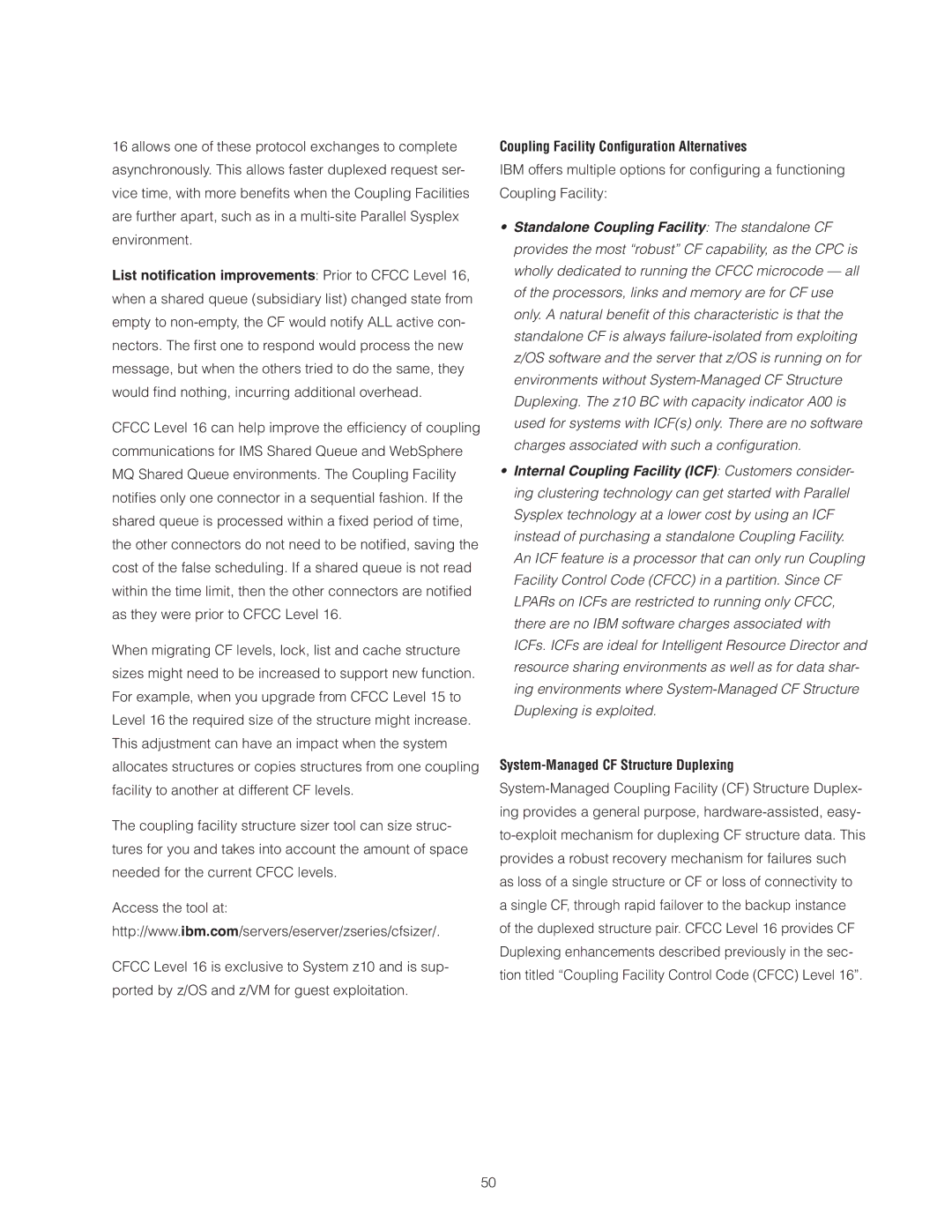16 allows one of these protocol exchanges to complete asynchronously. This allows faster duplexed request ser- vice time, with more benefi ts when the Coupling Facilities are further apart, such as in a
List notification improvements: Prior to CFCC Level 16, when a shared queue (subsidiary list) changed state from empty to
CFCC Level 16 can help improve the effi ciency of coupling communications for IMS Shared Queue and WebSphere MQ Shared Queue environments. The Coupling Facility notifi es only one connector in a sequential fashion. If the shared queue is processed within a fi xed period of time, the other connectors do not need to be notifi ed, saving the cost of the false scheduling. If a shared queue is not read within the time limit, then the other connectors are notifi ed as they were prior to CFCC Level 16.
When migrating CF levels, lock, list and cache structure sizes might need to be increased to support new function. For example, when you upgrade from CFCC Level 15 to Level 16 the required size of the structure might increase. This adjustment can have an impact when the system allocates structures or copies structures from one coupling facility to another at different CF levels.
The coupling facility structure sizer tool can size struc- tures for you and takes into account the amount of space needed for the current CFCC levels.
Access the tool at:
http://www.ibm.com/servers/eserver/zseries/cfsizer/.
CFCC Level 16 is exclusive to System z10 and is sup- ported by z/OS and z/VM for guest exploitation.
Coupling Facility Configuration Alternatives
IBM offers multiple options for confi guring a functioning Coupling Facility:
•Standalone Coupling Facility: The standalone CF provides the most “robust” CF capability, as the CPC is wholly dedicated to running the CFCC microcode — all of the processors, links and memory are for CF use only. A natural benefi t of this characteristic is that the standalone CF is always
•Internal Coupling Facility (ICF): Customers consider- ing clustering technology can get started with Parallel Sysplex technology at a lower cost by using an ICF instead of purchasing a standalone Coupling Facility. An ICF feature is a processor that can only run Coupling Facility Control Code (CFCC) in a partition. Since CF LPARs on ICFs are restricted to running only CFCC, there are no IBM software charges associated with ICFs. ICFs are ideal for Intelligent Resource Director and resource sharing environments as well as for data shar- ing environments where
System-Managed CF Structure Duplexing
50
